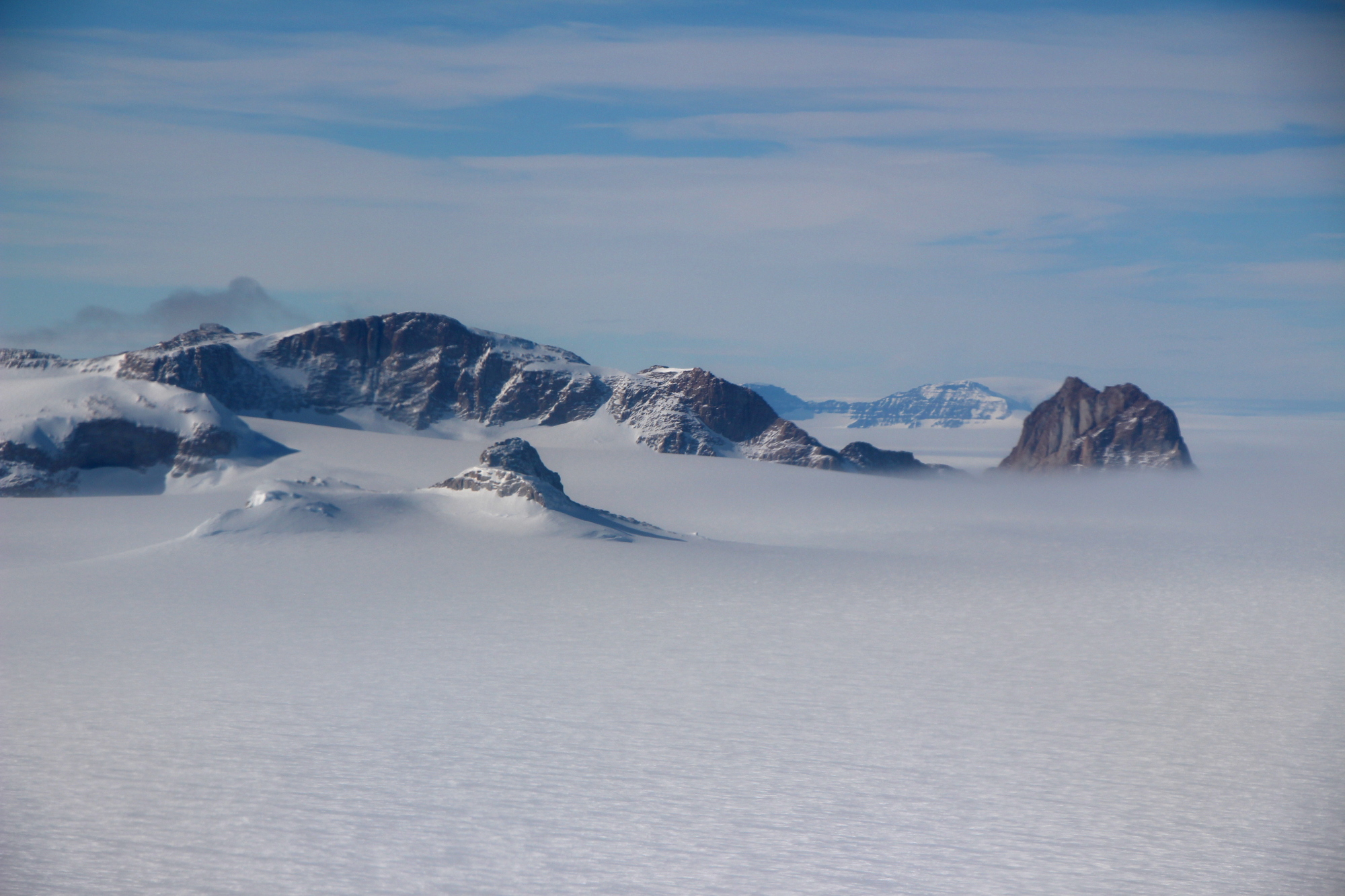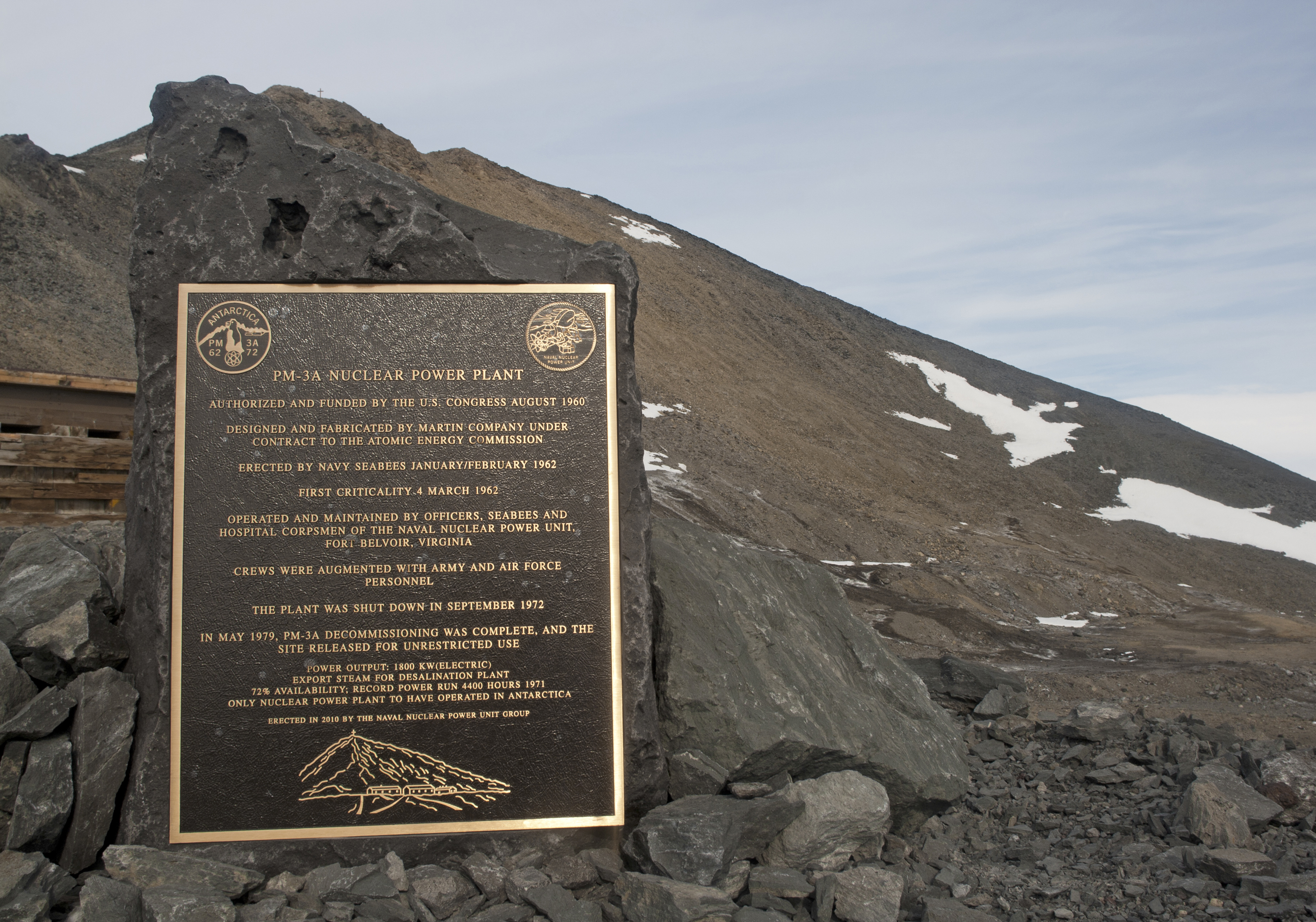|
Potter Nunataks
Potter Nunataks () is a group of small, rather isolated nunataks about 6 nautical miles (11 km) southwest of the Helliwell Hills and 20 nautical miles (37 km) northeast of Welcome Mountain of the Outback Nunataks. Mapped by United States Geological Survey (USGS) from surveys and U.S. Navy air photos, 1959–64. Named by Advisory Committee on Antarctic Names (US-ACAN) for Neal Potter, economist, McMurdo Station McMurdo Station is a United States Antarctic research station on the south tip of Ross Island, which is in the New Zealand-claimed Ross Dependency on the shore of McMurdo Sound in Antarctica. It is operated by the United States through the Unit ..., 1965–66, who made a study of the economic potentials of Antarctica. Nunataks of Victoria Land Pennell Coast {{VictoriaLand-geo-stub ... [...More Info...] [...Related Items...] OR: [Wikipedia] [Google] [Baidu] |
Nunatak
A nunatak (from Inuit ''nunataq'') is the summit or ridge of a mountain that protrudes from an ice field or glacier that otherwise covers most of the mountain or ridge. They are also called glacial islands. Examples are natural pyramidal peaks. When rounded by glacial action, smaller rock promontories may be referred to as rognons. The word is of Greenlandic origin and has been used in English since the 1870s. Description The term is typically used in areas where a permanent ice sheet is present and the nunataks protrude above the sheet.J. J. Zeeberg, ''Climate and Glacial History of the Novaya Zemlya Archipelago, Russian Arctic''. pp. 82–84 Nunataks present readily identifiable landmark reference points in glaciers or ice caps and are often named. While some nunataks are isolated, sometimes they form dense clusters, such as Queen Louise Land in Greenland. Nunataks are generally angular and jagged, which hampers the formation of glacial ice on their tops, although snow can a ... [...More Info...] [...Related Items...] OR: [Wikipedia] [Google] [Baidu] |
Helliwell Hills
The Usarp Mountains are a major Antarctic mountain range, lying west of the Rennick Glacier and trending north to south for about . The feature is bounded to the north by Pryor Glacier and the Wilson Hills. These mountains were discovered and first photographed from aircraft of the U.S. Navy Operation Highjump in 1946. They were first sighted and entered by the U.S. Victoria Land Traverse 1959-1960 (VLT), and the first ascent of Mount Welcome was made by John G. Weihaupt, Alfred Stuart, Claude Lorius, and Arnold Heine of that traverse team. The mountains were completely mapped by the United States Geological Survey from VLT reports, U.S. Navy air photos from 1960–63, and subsequent surveys. The name is an acronym of the United States Antarctic Research Program (USARP), and was applied by Advisory Committee on Antarctic Names (US-ACAN) in recognition of the accomplishments of that program in Antarctica. A detailed account of the Victoria Land Traverse appears in the Geol ... [...More Info...] [...Related Items...] OR: [Wikipedia] [Google] [Baidu] |
Welcome Mountain
Welcome Mountain () is a very prominent mountain A mountain is an elevated portion of the Earth's crust, generally with steep sides that show significant exposed bedrock. Although definitions vary, a mountain may differ from a plateau in having a limited Summit (topography), summit area, and ... that is surmounted by three peaks, the highest 2,505 m, standing 5 nautical miles (9 km) southeast of Mount Southard in the Outback Nunataks. Discovered and named by the U.S. Victoria Land Traverse party, 1959–60. So named because it was the first mountain visited by the traverse party after crossing the interior plateau and not seeing any mountains or landmark features for nearly three months. Further reading * Gunter Faure, Teresa M. Mensing, 'The Transantarctic Mountains: Rocks, Ice, Meteorites and Water'', PP 109 - 110 * Edmund Stump, 'The Ross Orogen of the Transantarctic Mountains'', PP 17-18 External links USGC mapWelcome Mountain at the SCAR Composite Gazet ... [...More Info...] [...Related Items...] OR: [Wikipedia] [Google] [Baidu] |
Outback Nunataks
Outback Nunataks () is a series of bare rock nunataks and mountains which are distributed over an area about long by wide. The group lies south of Emlen Peaks of the Usarp Mountains and west of Monument Nunataks and upper Rennick Glacier, adjacent to the featureless interior plateau. They were discovered by the U.S. Victoria Land Traverse party, 1959–60, and mapped by United States Geological Survey (USGS) from surveys and U.S. Navy air photos, 1959–64. They were so named by Advisory Committee on Antarctic Names (US-ACAN) for their remote position at the posterior side of the large mountain belt that extends from the Ross Sea to the interior ice plateau. Features Geographic features of the Outback Nunataks include: * Chan Rocks * Coleman Bluffs * De Camp Nunatak * Derbyshire Peak * Doe Nunatak * Doescher Nunatak * Fitzsimmons Nunataks * Frontier Mountain * Johannessen Nunataks * Miller Butte * Mount Blair * Mount Bower * Mount Chadwick * Mount Joern * Mount ... [...More Info...] [...Related Items...] OR: [Wikipedia] [Google] [Baidu] |
United States Geological Survey
The United States Geological Survey (USGS), formerly simply known as the Geological Survey, is a scientific agency of the United States government. The scientists of the USGS study the landscape of the United States, its natural resources, and the natural hazards that threaten it. The organization's work spans the disciplines of biology, geography, geology, and hydrology. The USGS is a fact-finding research organization with no regulatory responsibility. The agency was founded on March 3, 1879. The USGS is a bureau of the United States Department of the Interior; it is that department's sole scientific agency. The USGS employs approximately 8,670 people and is headquartered in Reston, Virginia. The USGS also has major offices near Lakewood, Colorado, at the Denver Federal Center, and Menlo Park, California. The current motto of the USGS, in use since August 1997, is "science for a changing world". The agency's previous slogan, adopted on the occasion of its hundredt ... [...More Info...] [...Related Items...] OR: [Wikipedia] [Google] [Baidu] |
Advisory Committee On Antarctic Names
The Advisory Committee on Antarctic Names (ACAN or US-ACAN) is an advisory committee of the United States Board on Geographic Names responsible for recommending commemorative names for features in Antarctica. History The committee was established in 1943 as the Special Committee on Antarctic Names (SCAN). It became the Advisory Committee on Antarctic Names in 1947. Fred G. Alberts was Secretary of the Committee from 1949 to 1980. By 1959, a structured nomenclature was reached, allowing for further exploration, structured mapping of the region and a unique naming system. A 1990 ACAN gazeeter of Antarctica listed 16,000 names. Description The United States does not recognise territorial boundaries within Antarctica, so ACAN assigns names to features anywhere within the continent, in consultation with other national nomenclature bodies where appropriate, as defined by the Antarctic Treaty System. The research and staff support for the ACAN is provided by the United States Geologi ... [...More Info...] [...Related Items...] OR: [Wikipedia] [Google] [Baidu] |
Neal Potter
Neal Potter (March 22, 1915 – May 27, 2008) was an American Democratic politician from Maryland. He served as fourth executive of Montgomery County, Maryland, from 1990 to 1994. Early life and education Alfred Neal Potter grew up in Montgomery County, the son of Alden A. and Charlotte Waugh Potter, and graduated from Bethesda-Chevy Chase High School. Potter's early interest in engineering changed to economics and political science when he entered Johns Hopkins University in 1933. He received his B.A. (Phi Beta Kappa) and M.A. in political science and economics from the University of Minnesota. He went on to perform graduate work in public finance at the University of Chicago. Career An economist with the U.S. Office of Price Administration from 1941 to 1946, he went on to teach economics at Carnegie Tech (now Carnegie Mellon University) in Pittsburgh, Pennsylvania, from 1946 to 1947, and at Washington State College in Pullman, Washington, from 1947 to 1951. Potter held th ... [...More Info...] [...Related Items...] OR: [Wikipedia] [Google] [Baidu] |
McMurdo Station
McMurdo Station is a United States Antarctic research station on the south tip of Ross Island, which is in the New Zealand-claimed Ross Dependency on the shore of McMurdo Sound in Antarctica. It is operated by the United States through the United States Antarctic Program (USAP), a branch of the National Science Foundation. The station is the largest community in Antarctica, capable of supporting up to 1,258 residents, and serves as one of three year-round United States Antarctic science facilities. All personnel and cargo going to or coming from Amundsen–Scott South Pole Station first pass through McMurdo. By road, McMurdo is 3 kilometres (1.9 mi) from New Zealand's smaller Scott Base. History The station takes its name from its geographic location on McMurdo Sound, named after Lieutenant Archibald McMurdo of . The ''Terror'', commanded by Irish explorer Francis Crozier, along with expedition flagship ''Erebus'' under command of James Clark Ross, first charted the area ... [...More Info...] [...Related Items...] OR: [Wikipedia] [Google] [Baidu] |
Nunataks Of Victoria Land
A nunatak (from Inuit ''nunataq'') is the summit or ridge of a mountain that protrudes from an ice field or glacier that otherwise covers most of the mountain or ridge. They are also called glacial islands. Examples are natural pyramidal peaks. When rounded by glacial action, smaller rock promontories may be referred to as rognons. The word is of Greenlandic origin and has been used in English since the 1870s. Description The term is typically used in areas where a permanent ice sheet is present and the nunataks protrude above the sheet.J. J. Zeeberg, ''Climate and Glacial History of the Novaya Zemlya Archipelago, Russian Arctic''. pp. 82–84 Nunataks present readily identifiable landmark reference points in glaciers or ice caps and are often named. While some nunataks are isolated, sometimes they form dense clusters, such as Queen Louise Land in Greenland. Nunataks are generally angular and jagged, which hampers the formation of glacial ice on their tops, although snow can a ... [...More Info...] [...Related Items...] OR: [Wikipedia] [Google] [Baidu] |





